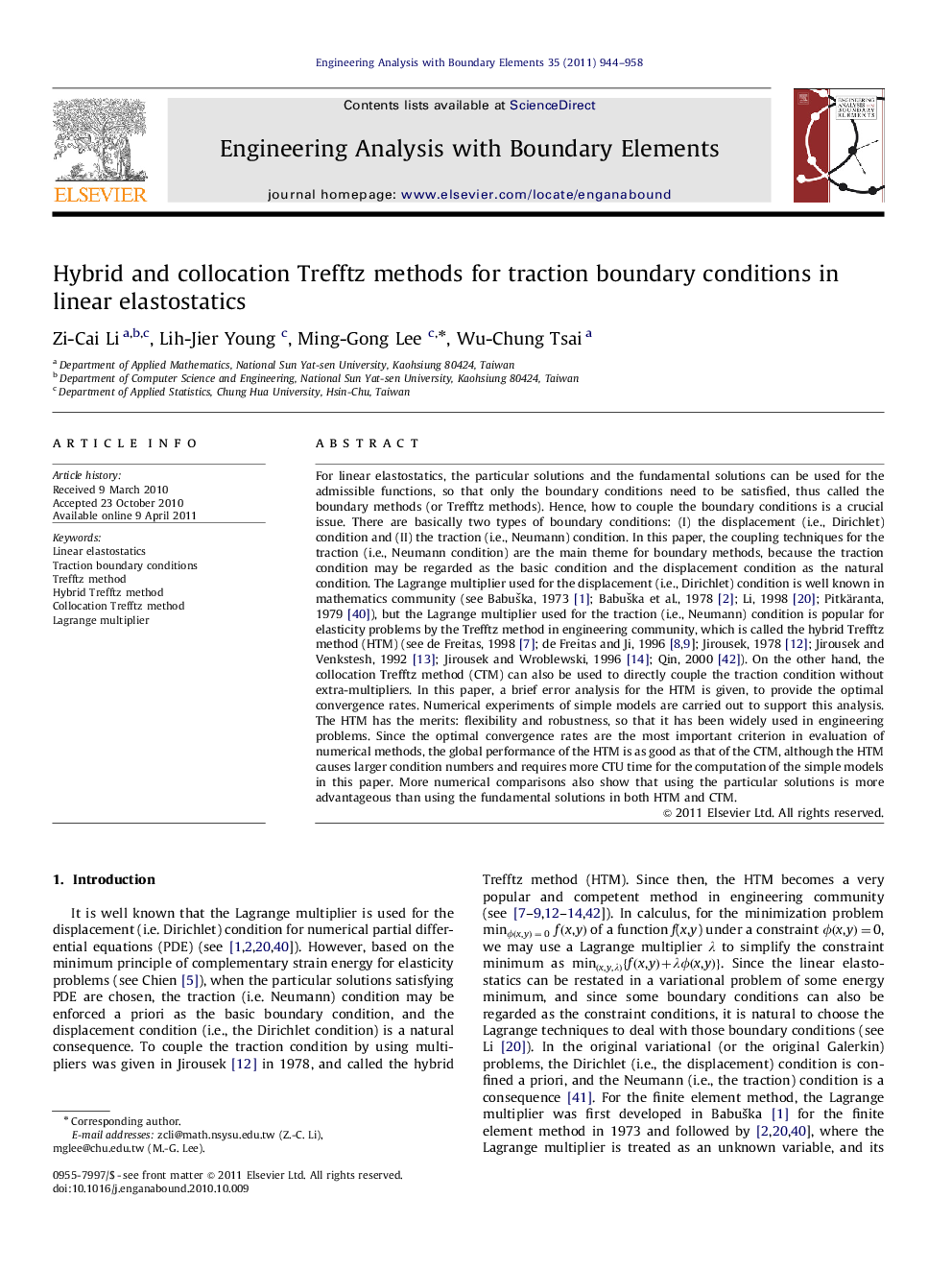| کد مقاله | کد نشریه | سال انتشار | مقاله انگلیسی | نسخه تمام متن |
|---|---|---|---|---|
| 513222 | 866458 | 2011 | 15 صفحه PDF | دانلود رایگان |

For linear elastostatics, the particular solutions and the fundamental solutions can be used for the admissible functions, so that only the boundary conditions need to be satisfied, thus called the boundary methods (or Trefftz methods). Hence, how to couple the boundary conditions is a crucial issue. There are basically two types of boundary conditions: (I) the displacement (i.e., Dirichlet) condition and (II) the traction (i.e., Neumann) condition. In this paper, the coupling techniques for the traction (i.e., Neumann condition) are the main theme for boundary methods, because the traction condition may be regarded as the basic condition and the displacement condition as the natural condition. The Lagrange multiplier used for the displacement (i.e., Dirichlet) condition is well known in mathematics community (see Babuška, 1973 [1]; Babuška et al., 1978 [2]; Li, 1998 [20]; Pitkäranta, 1979 [40]), but the Lagrange multiplier used for the traction (i.e., Neumann) condition is popular for elasticity problems by the Trefftz method in engineering community, which is called the hybrid Trefftz method (HTM) (see de Freitas, 1998 [7]; de Freitas and Ji, 1996 [8] and [9]; Jirousek, 1978 [12]; Jirousek and Venkstesh, 1992 [13]; Jirousek and Wroblewski, 1996 [14]; Qin, 2000 [42]). On the other hand, the collocation Trefftz method (CTM) can also be used to directly couple the traction condition without extra-multipliers. In this paper, a brief error analysis for the HTM is given, to provide the optimal convergence rates. Numerical experiments of simple models are carried out to support this analysis. The HTM has the merits: flexibility and robustness, so that it has been widely used in engineering problems. Since the optimal convergence rates are the most important criterion in evaluation of numerical methods, the global performance of the HTM is as good as that of the CTM, although the HTM causes larger condition numbers and requires more CTU time for the computation of the simple models in this paper. More numerical comparisons also show that using the particular solutions is more advantageous than using the fundamental solutions in both HTM and CTM.
Journal: Engineering Analysis with Boundary Elements - Volume 35, Issue 7, July 2011, Pages 944–958